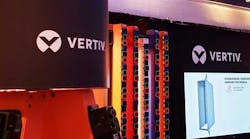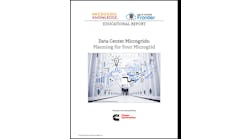Vertiv Highlights Opportunities & Challenges of Distributed, Centralized Backup
Power protection strategies. They are critical to the success of today’s critical facilities and to the daily routines of data centers, IT and facility managers. But a big question remains. Does a distributed or centralized backup strategy make more sense for your facility?
Download the full report.
According to a new white paper from Vertiv, “there is no easy answer to that question.” That’s in part why the company released the new report that studies in detail the potential downfalls of different bypass architectures.
“Companies must weigh each architectural advantage and disadvantage against their financial constraints, availability needs and management capabilities before deciding which one to employ,” says Vertiv.
By following the suggestions in this white paper, Vertiv says data center operators can simplify their decision-making process by receiving an overview of weaknesses and capabilities of both system designs, whichever strategy they ultimately select.
According to the report, in a distributed bypass architecture, each UPS module has its own internal static switch, rated according to UPS size, and each UPS monitors its own output.
“On the contrary, in a centralized bypass system, there is one large common static switch for the entire UPS system, according to the size of the known final size of the system,” Vertiv pointed out.
The two technically fulfill the same purposes, like guarantee power continuity, Vertiv pointed out, but have different architectures.
The decision on whether to implement a distributed or centralized backup strategy is a decision that IT and Facility Managers have to make for their own data center.
“There is no single answer to that question as architecture advantages and disadvantages together with financial constraints or management capabilities must be taken into consideration and evaluated by companies before deciding which way to go.” — Vertiv
That said, Vertiv highlights in its new report, the answer to the five simple questions might help the decision-making process:
- What are the scalability plans expected in the near future?
- Which strategy makes better financial sense?
- Which bypass architecture will better meet my availability requirements?
- What are the impacts on system reliability?
- Which is the most fault tolerant solution for my data center?
This white paper explores the principle of centralized versus distributed bypass and will apply it equally to standalone monolithic and integrated-modular UPS architectures, especially trying to clarify the differences in two major areas:
- Reliability and hence, availability
- Fault clearing capacity and short-circuit withstand rating
Download the full report, “Distributed and Centralized Bypass Architectures Compared,” courtesy of Vertiv, to further explore distributed and centralized backup strategies, to help adapt to the growing demands of the market in terms of availability, capacity and performance requirements.





